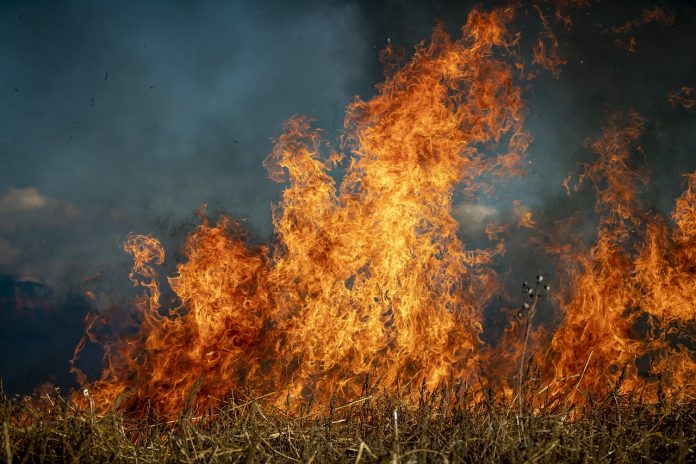The CBS News story, “Extreme fire weather fueled by climate change played significant role in Canada’s wildfires, new report says,” opens with this:
Extreme fire weather conditions fueled by climate change contributed to the increased severity of eastern Canada’s wildfire season this spring, a new report from the World Weather Attribution revealed.
…
The report, published on Tuesday, also determined that the fires, which burned across 13 million hectares of land through May and June, were linked to “very large-scale impacts on air quality.”
It is certainly true that Canada’s wildfires this year were large and impacted air quality across Canada and parts of the U.S., but that’s where the truth of the story stops.
World Weather Attribution (WWA) is a climate alarmist organization specifically formed to attribute instances of extreme weather events and natural disasters to climate change. It uses computer models to do so and portrays the models’ outputs as if they were factual data. They aren’t. Computer models are tools and they are only effective or useful if their outputs, when checked against data, correspond to or are consistent with that data.
As Climate Realism has repeatedly shown, however, here, here, and here, for instance, climate models poorly represent real world data; they run far too hot and have produced climatological projections which have repeatedly proven false.
Climate Realism has had reason to specifically refute WWA’s assertions that various extreme weather events were caused by climate change in the past, here, here, and here, for example.
Aside from the fact that the models used by WWA to credit Canada’s 2023 wildfires to climate change are untrustworthy, Historical records and data show that, although Canada’s wildfires were large and their impact on air quality was widespread, such wildfires and air impacts in and from Canada, although relatively rare, are hardly unique.
As discussed in Climate Realism posts, here and here, refuting similar instances of misinformation about Canada’s wildfires previously published by the mainstream media, wildfires happen every year across Canada, which is why it has a designated “wildfire season,” just like in the United States.
Also, smoke from wildfires in Canada have periodically impacted air quality on the U.S. East Coast and beyond in the past, as they have done in 2023. Long before anyone used fossil fuels to generate electricity or for transportation, the New England Historical Society reports smoke from Canadian wildfires created “yellow” or “dark” days multiple times in history, in particular: on May 12, 1706; October. 21, 1716; August, 9 1732; May 19, 1780; July 3, 1814; November, 6-10, 1819; July 8, 1836; September. 2, 1894; and September 24-30, 1950. So contrary to the impression given by WWA and CBS News, smoke drifting into the United States from Canadian wildfires is hardly unprecedented.
The May 1780 wildfires in Canada delivered so much smoke to the Eastern United States, that May 19, 1780, became known as “New England’s Dark Day.” Reports from the time explain the smoke was so bad that candles had to be lit at midday to see.
Not only were this year’s fires not unique, they also do not as WWA and CBS News would have one believe, represent a worsening trend in Canadian wildfires that can attributed to climate change. The evidence shows wildfires in Canada and globally have been declining during the recent period of modest warming, rather than becoming more frequent or severe.
As pointed out in a previous Climate Realism post by meteorologist Anthony Watts on this topic, data from Canada’s National Forestry Database show declining trends for both the number of fires and area burned over the past 31 years. A study by scientists with the Canadian Forest Service, in fact, attributed the decline in forest fires in Canada over the past few decades to the combined effect of carbon dioxide fertilization and modestly rising temperatures, which resulted in improved soil moisture conditions. Because plants lose less water via the process of transpiration under conditions of high CO2 and higher temperatures, less moisture is drawn from soil.
Globally, NASA satellites have also recorded a significant decline in the number of wildfires. In the report Researchers Detect a Global Drop in Fires, NASA wrote “Globally, the total acreage burned by fires declined 24 percent between 1998 and 2015, according to a new paper published in Science.”
Following the science, therefore, one must conclude that 2023’s wildfires are neither unique, nor can they be honestly attributed to the recent modest global warming. Of course, WWA largely eschews references to hard data or historical records in its attribution studies. As such, facts have little bearing on their climate model outputs. But one must ask, what about the real-world data and research clearly demonstrating declining wildfire trends does CBS News not get? CBS should be reporting wildfire news based on data, not generating alarming news based on flawed models, sans facts.

















Although they do mention ‘climate change’ this article refers to a study that says 90% of wildfires are caused by humans being careless with fire.
https://ktla.com/news/california/humans-to-blame-for-about-90-of-wildfire-ignitions-report-finds
They give a link to the large study https://www.publish.csiro.au/wf/Fulltext/WF22155#R217 which also mentions “climate change” as a contributing factor but goes on the say “Human-caused ignition was associated with over 90% of recorded fires in most California counties over the period 1919–2016 (Keeley and Syphard 2018). These fires stem from many activities, including arson, debris burning, smoking, recreational activities, equipment operation, vehicles, and power infrastructure.” and more.